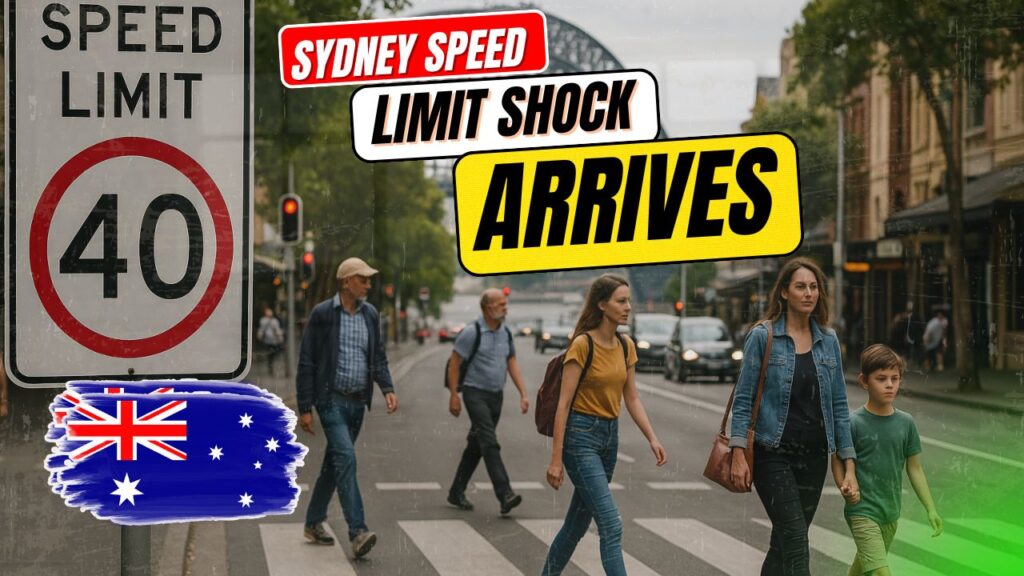In a major move toward safer and more sustainable urban living, Australia’s largest city — Sydney — is reducing its default speed limit to 40 km/h from 2025. This change aims to create safer streets, reduced emissions, and greener city environments that protect both drivers and pedestrians. Authorities believe this decision will not only prevent road injuries but also support Sydney’s broader climate action plan. The new rules will gradually roll out across inner-city suburbs, school zones, and major intersections to ensure smoother traffic and safer commuting for everyone.

Why Sydney is Lowering Speed Limits in 2025
The decision to lower the limit to 40 km/h reflects Sydney’s ongoing commitment to road safety and urban sustainability. According to city planners, slower traffic leads to fewer accidents and improved pedestrian safety. The measure is expected to significantly reduce fatal crashes in densely populated areas while promoting eco-friendly transport options like cycling and walking. By introducing these changes in 2025, Sydney joins a global movement of cities reducing speed limits to create calmer, cleaner, and more people-friendly environments.
Impact on Drivers, Pedestrians, and the Environment
The new 40 km/h rule will have a positive effect across various groups — from senior drivers and families to public transport operators. For drivers, lower speeds mean more time to react, while pedestrians and cyclists gain greater protection. The initiative will also help reduce carbon emissions by encouraging smoother driving and fewer sudden stops. As part of Sydney’s green city policy, this change aligns with broader climate targets, aiming to cut vehicle pollution and make the streets more walkable and community-oriented.
How the 40 km/h Rollout Will Work Across Sydney
The speed limit reduction will be introduced in stages starting early 2025, focusing first on city centre zones, school districts, and residential areas. Road signs will be updated, and public awareness campaigns will educate drivers on the benefits of slower traffic. Enforcement will include mobile cameras and real-time monitoring by local authorities. The government also plans to gather feedback from residents to assess the impact and further refine the rollout before expanding it to outer suburbs and major arterial routes.
Summary and Future Outlook
Sydney’s decision to move to a 40 km/h speed limit marks a turning point in the city’s transport strategy. The plan demonstrates a strong focus on public safety, environmental goals, and community wellbeing. As 2025 approaches, the initiative will likely inspire other Australian cities to adopt similar safety-driven reforms. With cleaner air, fewer accidents, and calmer traffic, Sydney is setting an example of how modern cities can balance growth with sustainability and safety for all residents.
| Category | Details |
|---|---|
| New Speed Limit | 40 km/h across key areas |
| Implementation Year | Starting from 2025 |
| Primary Goal | Reduce road accidents and emissions |
| Target Areas | CBD, school zones, residential streets |
| Monitoring Method | Speed cameras and local patrols |
| Expected Benefit | Safer, greener, and calmer city roads |
Frequently Asked Questions (FAQs)
1. When will the 40 km/h speed limit start in Sydney?
The new limit will begin rolling out across Sydney from early 2025.
2. Which areas will be affected first?
Initial implementation will focus on CBD, school, and residential zones.
3. Why is Sydney reducing its speed limit?
The goal is to improve safety and reduce environmental pollution.
4. Will drivers be fined for exceeding 40 km/h?
Yes, exceeding the new limit will attract penalties and camera enforcement.




